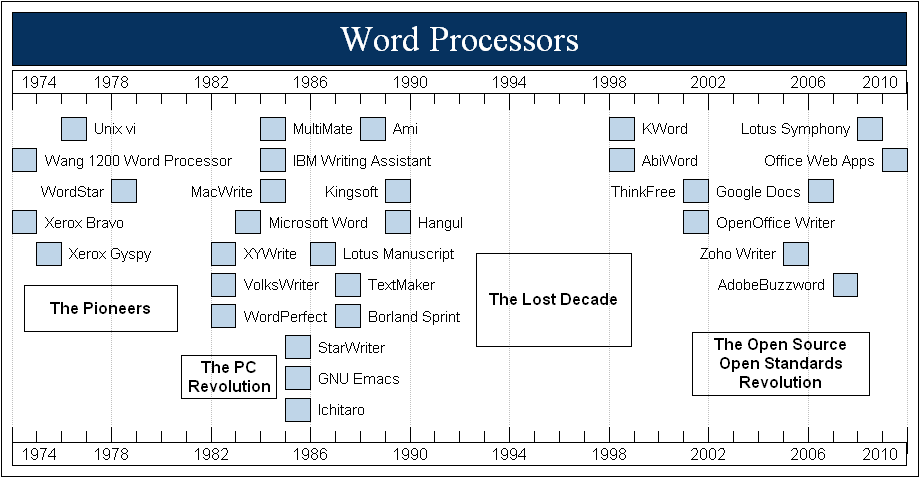-
The ODF Podcast 001: Svante Schubert on ODF, RDF and ODFDOM | Open Document
“Last month OASIS ODF Adoption TC member Rob Weir sat down with Svante Schubert at the Plugfest in Granada to discuss a range of topics, including ODF 1.2’s RDF-based metadata and Svante’s work on ODFDOM. You can listen to this interview in our first episode of the ODF Podcast. “
-
OOXML is defective by design: The OOXML interoperability scam
“The conclusion is that there is actually no way for an OOXML consumer application to rely on the “standard” OOXML to interoperate with Excel 2010 (and Excel 2007). It’s all back to binary formats even though, by registering proprietary formats in the clipboard, the Excel team had years to implement this opportunity to store real OOXML in there.”
But the author here is talking about clipboard formats, not storage formats. So I think this is a lesser problem than the interop of stored documents themselves.
-
Promoting Open Source Software in Government: The Challenges of Motivation and Follow-Through [PDF]
“Given the funding cutoff, the IT department had no recourse except to stick with Microsoft Office, but along with Ecma, they helped to blur the definition of an open standard. If practical necessities require a government agency to set aside its commitment to archival security, open access, and related responsibilities, this should be stated candidly. Abatements can be changed later when financial or technical improvements make it possible to use open standards. But to declare something open when it is not does more than sow distrust—it pollutes future debate and perpetuates public ignorance. Furthermore, agencies should not accept uncritically a moniker of “openness” from other institutions, even highly regarded ones such as Ecma and ISO, when these institutions take a lax attitude toward the traits held
important in the open source movement.” -
Office 2010 Professional | Business Productivity | ZDNet UK
“If cross-platform sharing and archiving is important to you, there’s improved support for ODF (Open Document Format) and an option to make the ODF the default file format. “
-
FSF launches free software extension listing for OpenOffice.org — Free Software Foundation
“The Free Software Foundation (FSF) today announced a project to assemble a replacement extension library for OpenOffice.org, which will list only those extensions which are free software, at http://www.fsf.org/openoffice.”
-
Making ODF better with HTML5? :: Alexandro Colorado
“So why we keep comparing ODF and whatever happens on the web? Certainly ODF has always done this, with standards like Dublin-core, MathML, and other standards. Microformats, and Geo locational web can certainly be in that train of thought. If the applications support it or not, let’s be clear, ODF should mark the leadership, and the apps should follow, so is meant to be that the apps should catch up to ODF and not the other way around.”
Posted from Diigo. The rest of my favorite links are here.
